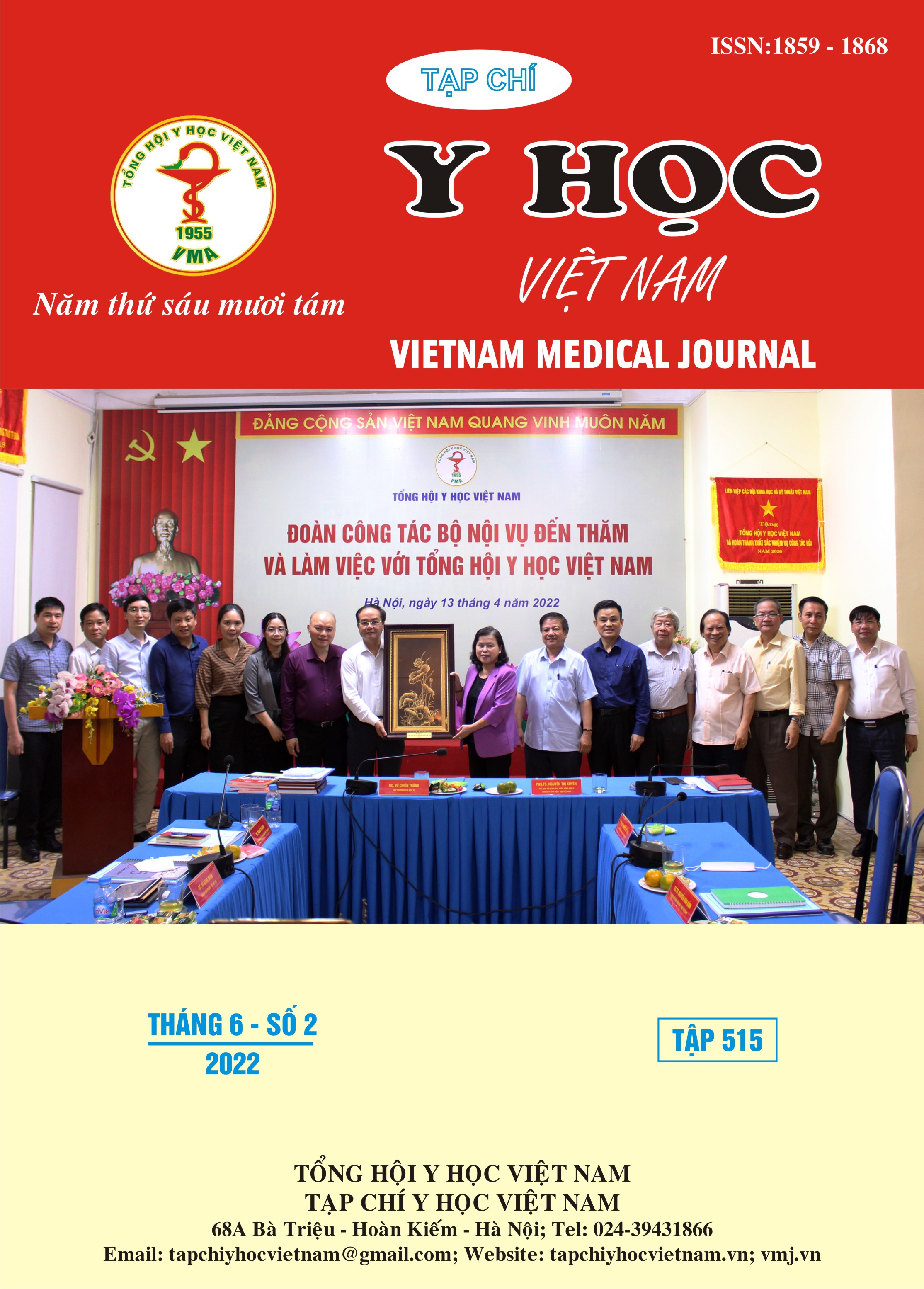INITIAL OUTCOMES OF SURGICAL TREATMENT IN PATIENTS WITH MULTILEVEL CERVICAL SPONDYLOTIC MYELOPATHY AT BACH MAI HOSPITAL
Main Article Content
Abstract
The study's objectives were to evaluate the initial outcomes of surgical treatment of multilevel cervical spondylotic myelopathy. Research Methods: An uncontrolled clinical intervention study evaluating outcomes before and after surgeryincluded 30 consecutive patients who underwent surgical treatment for multilevel cervical spondylotic myelopathy (M-CSM) from June, 2019 to Aug, 2021 at Orthopedic and Spine department, Bach Mai hospital. Results: Mean age 63.10 ± 9.82 (from 39 - 79 years old), 19 male patients (63.3%), 11 female patients (36.7%). Male/Female ratio ≈ 2/1. The average follow-up time was 13.13 months.The average mJOA score preoperative, postoperative, and follow-up was 10.17, 13.53, and 16.17, respectively. The average cervical myelopathy recovery rate after surgery and follow-up time was 45.46% and 76.69%, respectively. The patient with the onset ≥6 months had a worse rate of cervical myelopathy recovery at the time of final follow-up (p=0.021). Regional Cobb angle and C2-C7 Cobb angle of the group of patients with anterior surgery improved significantly compared to patients with posterior surgery (p = 0.006 and 0.029, respectively). The posterior approach had a shorter operation time but more blood loss than the anterior approach (p<0.001). Conclusion: Initial surgical outcomes for multilevel cervical spondylotic myelopathy were good at two approaches.
Article Details
Keywords
Cervical spondylotic myelopathy, initial surgical outcomes
References
2. Nouri, A., et al., Degenerative Cervical Myelopathy: Epidemiology, Genetics, and Pathogenesis. Spine (Phila Pa 1976), 2015. 40(12): p. E675-93.
3. Zileli, M., et al., Outcome Measures and Variables Affecting Prognosis of Cervical Spondylotic Myelopathy: WFNS Spine Committee Recommendations. Neurospine, 2019. 16(3): p. 435-447.
4. Lad, S.P., et al., National trends in spinal fusion for cervical spondylotic myelopathy. Surg Neurol, 2009. 71(1): p. 66-9; discussion 69.
5. Zhang, R.J., et al., Clinical features and surgical outcomes of cervical spondylotic myelopathy in patients of different ages: a retrospective study. Spinal Cord, 2018. 56(1): p. 7-13.
6. Bajamal, A.H., et al., Posterior Surgical Techniques for Cervical Spondylotic Myelopathy: WFNS Spine Committee Recommendations. Neurospine, 2019. 16(3): p. 421-434.
7. Tetreault, L., et al., The modified Japanese Orthopaedic Association scale: establishing criteria for mild, moderate and severe impairment in patients with degenerative cervical myelopathy. Eur Spine J, 2017. 26(1): p. 78-84.
8. Hirabayashi, K. and K. Satomi, Operative procedure and results of expansive open-door laminoplasty. Spine (Phila Pa 1976), 1988. 13(7): p. 870-6.
9. Nouri, A., et al., Magnetic resonance imaging assessment of degenerative cervical myelopathy: a review of structural changes and measurement techniques. Neurosurg Focus, 2016. 40(6): p. E5.
10.Tetreault, L.A., A. Karpova, and M.G. Fehlings, Predictors of outcome in patients with degenerative cervical spondylotic myelopathy undergoing surgical treatment: results of a systematic review. Eur Spine J, 2015. 24 Suppl 2: p. 236-51.


